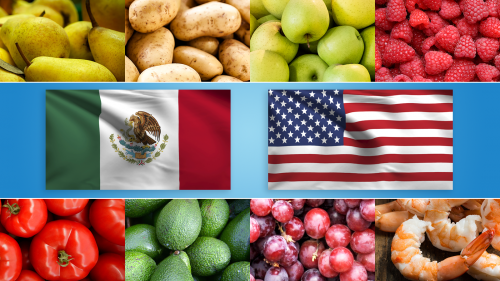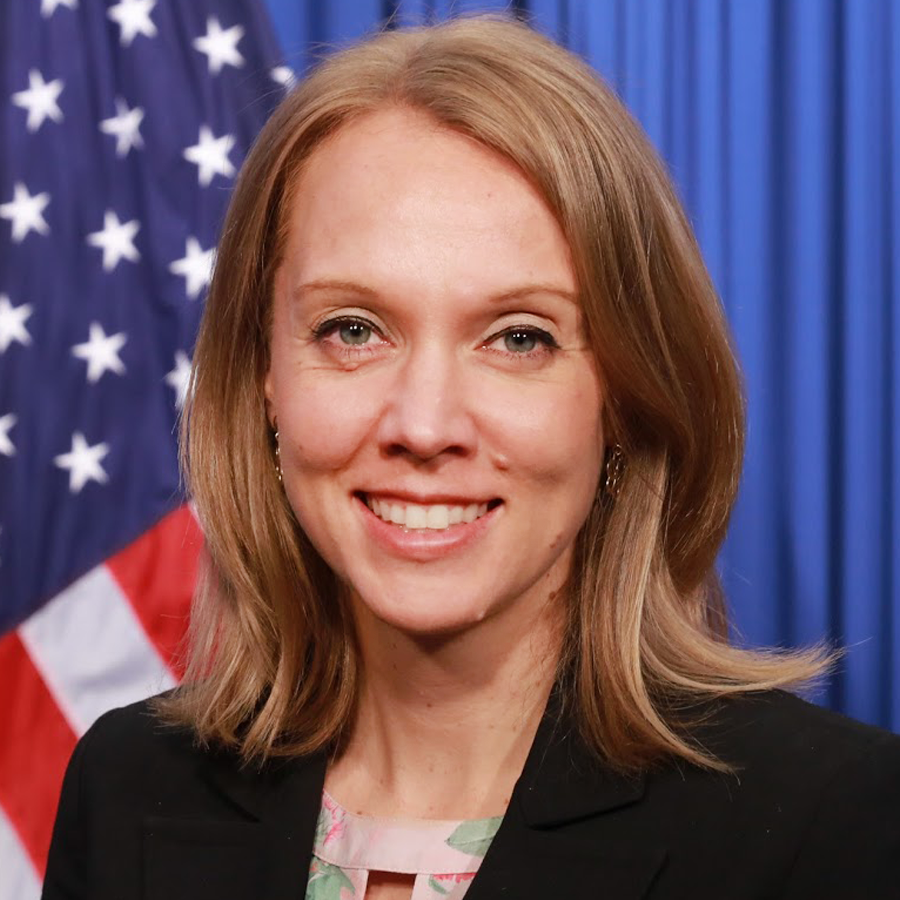FDA’s Partnership with Mexico’s Regulators Strengthens Food Safety Protections

By: Donald Prater, Associate Commissioner for Imported Food Safety; Julie Moss, Director of the International Affairs Staff in the Center for Food Safety and Applied Nutrition; and Katherine Serrano, Director of the Latin America Office
As the food supply becomes increasingly global, the U.S. Food and Drug Administration’s partnerships with our regulatory counterparts and food producers in other nations are more important than ever. The work that the FDA has done in collaboration with the government and food industry in Mexico shows how much we can accomplish for the good of all our consumers when we work together.
The FDA and the agencies responsible for food safety regulation in Mexico – the Federal Commission for the Protection from Sanitary Risks (COFEPRIS) and the National Service of Agro-Alimentary Health, Safety and Quality (SENASICA) – have a long history of working together. There’s good reason for that – FDA data shows that about one-third of all agency-regulated human food imported into the U.S. is from Mexico, including 60% of our fresh produce imports. Thanks to the collaboration between our two countries, we have made strides in areas such as inspections, outbreak response and food safety training.
FDA offices also work together to successfully implement innovative ways to enhance food safety protection. The Office of Food Policy and Response works with colleagues in the Center for Food Safety and Applied Nutrition (CFSAN) and the Office of Regulatory Affairs (ORA) to strategically coordinate and advance our partnership with SENASICA and COFEPRIS; and FDA’s Latin America Office (LAO) within the Office of Global Policy and Strategy plays a key role as the direct connection with the Mexican government and food industry. One of LAO’s posts is in Mexico City, and its work encompasses a wide range of food safety strategic initiatives, outbreak response activities, targeted outreach, and technical goals.
Since LAO was established in 2009, the staff there have been paramount in building the FDA’s relationship with our counterparts in COFEPRIS and SENASICA, facilitating successful collaborations on food safety across the food industry. LAO’s successful relationship building, as well as cultural expertise, have been integral in strengthening the mutual trust that is evident in our partnership with Mexico.
Broadening Our Partnership
In a virtual ceremony in October 2020, the FDA, COFEPRIS and SENASICA officially launched the FDA-Mexico Food Safety Partnership (FSP), broadening and strengthening the scope of our existing partnership to include the safety of all human food regulated by the FDA.
The earlier Produce Safety Partnership (PSP), signed in 2014, had created a framework for Mexico and the U.S. to work together to contain potentially serious outbreaks related to produce and to lessen consumer exposure to foodborne disease.
While the PSP was successful, Mexico’s new administration, which took office in late 2018, and the FDA expressed interest in renewing their cooperation to reflect current food safety priorities. In addition to produce, the new FSP includes all human food regulated by the FDA, as Mexico exports seafood, processed fruits and vegetables, and snack foods to the U.S. — totaling about $25 billion in 2019, according to the Office of the U.S. Trade Representative and the National Oceanic and Atmospheric Administration. The FSP also embraces the use of new and emerging technologies, including elements of the FDA’s New Era of Smarter Food Safety initiative, to solve complex public health challenges. Further, it strengthens collaboration with academia, consumer groups, and other governmental offices in the U.S. and Mexico.
To implement the FSP, four work groups have been established with membership from the FDA, SENASICA and COFEPRIS to increase cooperation in the areas of: strategic priorities, laboratory collaboration, outbreak response and prevention, and food safety training.
Since the signing ceremony in October, all work groups have been meeting jointly to advance their food safety objectives. In March 2021 the FDA, SENASICA, and COFEPRIS Steering Committee met to keep the momentum going and ensure alignment with our shared food safety priorities.
Implementing FSMA
Under the FDA Food Safety Modernization Act (FSMA), the FDA established food safety regulations that domestic and foreign food producers must follow and established responsibility for importers to verify that their growers and suppliers in Mexico and other countries are meeting the FSMA-based standards.
The FDA has worked closely with government and industry partners in Mexico to support compliance with the FSMA rules. Our work together has included collaborating to host-Spanish-language training programs with SENASICA and across the industry to sustainably increase the number of trainers who can educate food producers in Mexico. The FDA has also facilitated virtual training in remote areas of Mexico during the COVID-19 pandemic.
Our Produce Safety Network, comprised of experts in the FDA’s CFSAN and ORA, has provided technical assistance and is responsible for conducting inspections under FSMA’s Produce Safety Rule. They’ve worked with partners to conduct educational on-farm readiness reviews in Mexico to give farmers a sense of how prepared they are to meet the FSMA produce safety rule requirements before inspections are conducted.
Committing to Safe Papayas
In August 2019, after eight U.S. outbreaks since 2011 of foodborne illnesses tied to consumption of papaya imported from Mexico, the FDA called on all segments of the papaya supply chain continuum to work together to strengthen food safety practices. In June 2020, the FDA repeated the call to action, highlighting the significant work by COFEPRIS, SENASICA and the produce industry to develop food safety best practices for the growing and handling of papaya.
Importantly, SENASICA published an Action Plan for Papaya – “Plan de Acción para papaya (Carica papaya L.)” – to help growers implement improved production and prevention practices for papayas. And the Texas International Produce Association (TIPA), ProExport Papaya, and United Fresh Produce Association published the “Food Safety Best Practices Guide for the Growing & Handling of Mexican Papaya, First Edition” in collaboration with the FDA, the U.S. Department of Agriculture (USDA) and SENASICA.
In addition, the FDA, SENASICA and the papaya industry (TIPA, ProExport Papaya) collaborated on the development of a remote series of two-day combination Produce Safety Alliance (PSA) Produce Safety Rule Grower Training and Papaya Best Practices trainings. These FDA-subsidized trainings have reached a significant number of papaya producers in Mexico.
We are pleased to report that in 2020, we did not see any outbreaks of Salmonella infections associated with papayas from Mexico, which is a testament to the strength of these partnerships and the collaborative work done to implement the improved practices.
Minimizing Risk of Cyclospora
Cyclospora infections continue to be a major concern in both countries. For example, in 2019, an outbreak of Cyclospora cayetanensis infections associated with fresh basil grown in Mexico made more than 240 people sick in 11 states.
Strategic partnerships with Mexico’s regulatory authorities, academia and trade organizations have enabled coordination of targeted training events to provide education on Cyclospora cayetanenesis biology and contamination. In 2020, the FDA along with SENASICA, COFEPRIS and key industry and academic partners, held both an in-person seminar and a virtual webinar on Cyclospora cayetanenesis to fresh herb growers and packers from the state of Puebla, Mexico.
We plan to continue this outreach, offering additional education webinars on susceptible commodities in other areas of Mexico.
Looking Ahead with the New Era of Smarter Food Safety
The FDA’s New Era of Smarter Food Safety blueprint builds on the science and risk-based approach to food safety achieved through FSMA by leveraging new technologies and approaches to create a safer food system over the next 10 years. The FSP exemplifies New Era goals by establishing a modernized information-sharing agreement that will help strengthen the FDA’s predictive analytic capabilities and strengthen our approach to prevention and outbreak response. It also supports the blueprint’s modern approach to food safety through tech-enabled traceability and strengthening food safety culture through sustainable initiatives.
For example, the FDA and SENASICA are collaborating to upload Mexico’s whole genome sequencing (WGS) data to the GenomeTrakr. This global database created by the FDA in collaboration with the National Center for Biotechnology Information, with assistance from the Centers for Disease Control and Prevention and the USDA’s Food Safety Inspection Service, links shared data generated by laboratories all over the world and is a powerful tool used to identify the source of foods tied to outbreaks. The FDA is providing technical assistance and training to strengthen SENASICA’s WGS laboratory operations.
There’s a lot of work ahead, but the strong partnership we’ve established between the FDA and our Mexican regulatory counterparts will enable us to face future food safety challenges together in a coordinated way.



